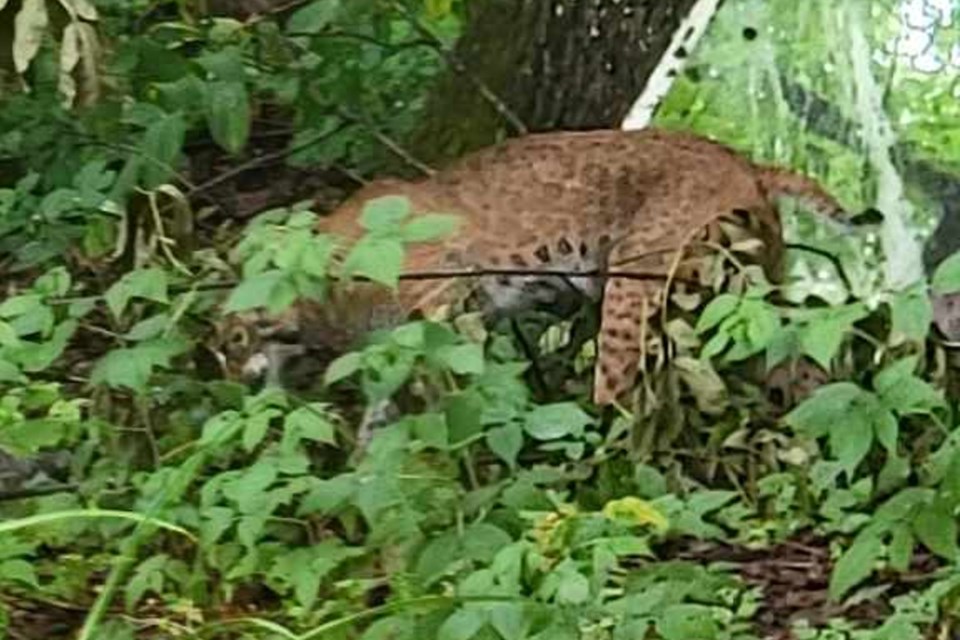The large cat that was spotted in an Echo Bay backyard earlier this week was likely a bobcat, according to the Ministry of Natural Resources.
Bill Gendron and his wife Rose Mary took several photos of the mystery animal that strolled through their property on Wednesday afternoon, which ignited a fun debate on what kind of cat they spotted.
The Gendrons were certain it was a cougar — a rare creature but one that has been identified in Goulais River and Sault Michigan in recent years.
While some readers supported that observation, most of the comments and emails SooToday received had suggested the friendly visitor was probably a bobcat.
The ministry agreed.
“We are unable to provide confirmation, but based on the photos, the animal appears to be a bobcat given the length of tail, the spotting, the length of the rear legs, and general appearance,” they wrote.
Bobcats have been well-documented in the Sault and surrounding area for some years now.
In January 2016, one bobcat killed more than 40 hens in Laird Township. Another was spotted in Searchmont years prior. Other documented sightings have been made in Goulais River and east of Sault Ste. Marie.
According to the ministry, bobcats are found in forested areas of Ontario that experience typical winters with low snow depths. For example, they are common around Georgian Bay and further north in areas around Lake Huron.
The Ontario bobcat population size and abundance is not well known; however, bobcat densities in northern US states with similar habitat (Wisconsin) typically fall in the range of three to six adults per 100 square kilometres. Ontario does not have a bobcat monitoring program.
Bobcats generally do not range as far north as Canadian lynx, primarily due to their lack of large snowshoe-like feet that enable lynx to hunt and move more effectively in deep snow. However, warmer winters with less snow could potentially cause bobcats to expand their range further into northern Ontario.
If you encounter a bobcat, the ministry provided the following tips:
- Never approach the animal, especially if it’s near a kill or with young
- Never offer it food
- Do not run, a cat's instinct is to chase
- If you’re with others, stay together and act as a group
- Face the animal and talk firmly while slowly backing away
- Always leave the animal an escape route
- Do not crouch down or try to hide, instead try to appear larger
- Do not take your eyes off the animal or turn your back
- If the animal does not flee, be more assertive by shouting, waving your arms and throwing anything available
